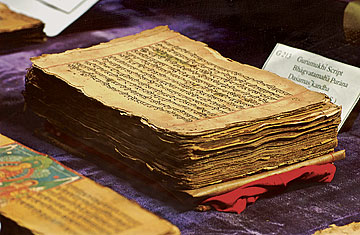
Best Place for Bibliophiles
Kolkata, India
At the turn of the nineteenth century, there was no colonial city in Asia more resplendent than Kolkata, formerly Calcutta. Kuala Lumpur and Singapore were muddy backwaters and Hong Kong a malarial archipelago of fishing villages. Kolkata was a metropolis, its boulevards and dockyards bustling with the ruling British and native Bengalis, Arab seafarers and Dutch adventurers, Armenians, Iraqi Jews and Chinese merchants. Here was a city at the crest of history, the Asian nerve center of a budding world empire.
Few institutions reflected the energy of this imperial moment better than the Asiatic Society. While the East India Company was wrapping its mercantile tentacles around India, the Society, started in Kolkata in 1784, delved into the subcontinent's venerable past. The intellectual ambition of its Orientalist scholars, according to its first articles, was bounded only by "the geographical limits of Asia, and ... extended to whatever is performed by Man or produced by Nature."
It was scholarship enabled by cold steel. The Society's first major research bequest arrived only after the British looted the storied library of the vanquished south Indian king, Tipu Sultan, in 1799. But those treasures kicked off a manuscript collection that today includes some 150,000 volumes of cartographic tomes, zoological encyclopedias and priceless rare books (like an exquisite gold-leafed Koran autographed by the Taj Mahal-building Mughal emperor Shah Jahan). Society eminences obsessed over Sanskrit, one describing the ancient language as "more exquisitely refined" than either Greek or Latin. Their translations and other works are housed in a nondescript 1950s building on Kolkata's Park Street, where they bear dusty testament to decade upon decade of dogged work and enterprising research.
Long gone are the days when tomb-robbing antiquarians and bookish philologists roamed these stacks. True to most contemporary Indian bureaucratic institutions, the Society is now staffed by bespectacled, tea-drinking custodians, seated at desks piled high with a clutter of papers. But they love Asia's lore no less than their predecessors, and a polite request is all that is required before curious visitors find themselves thumbing through ancient atlases or tracing the inscriptions of a two-thousand-year-old stone tablet. It's a thrill as gratifying now as it was two centuries ago.